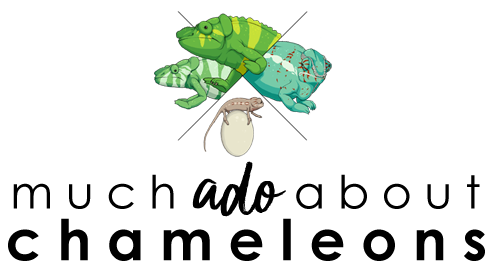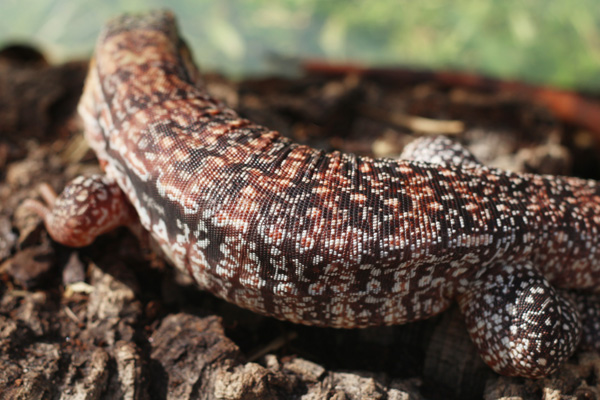
Why Different Vitamins and Supplements Matter
This is a general (and hopefully easy to understand) overview of why different vitamins and mineral
supplements we give our chameleons matter and how they affect their physiology.
Intro Into Physiology and Homeostasis
My medical dictionaries define physiology as: The science which deals with the functions of living organisms and its parts, and of the physical and chemical factors and processes that affect it.
It deals extensively with homeostasis, which is the tendency towards a state of balance and stable equilibrium within the body system, maintained by physiological processes. Keeping the body in a state of stability and balance is the primary function of most processes in the body, because this is when the organism can function at its best.
How Do The Vitamins and Supplements
Affect Homeostasis?
Each mineral and vitamin that I will talk about plays important roles in maintaining a balance within
the animal’s body. Too much of one but too little of another will all disrupt this balance, so it is
important to know what each one does and how to supplement them properly in our chameleons’ diets.
CALCIUM: Calcium is a mineral abundant within the body, and is vital for more than just healthy bones and teeth. Most physiological processes use calcium as a vital ingredient for the most basic actions; when an arm muscle contracts, for example, the individual muscle cells must reach their action potential before they can all contract and move the arm, and this is achieved by opening calcium channels within the cells and allowing for an influx of calcium to reach this action potential. So everything from blinking to making strong bones uses calcium.
When the body does not have sufficient calcium to run all these processes, it will steal calcium from the bones, where it is abundant, to keep muscles like the heart and nerve signals going. After enough time, this will lead to a condition in reptiles known as Metabolic Bone Disease, in which the bones have been so depleted of their calcium that the bones themselves are weak, brittle, and sometimes barely still there. This leads to breaks, malformations in the bones in animals that are still trying to grow, and failures in other body functions, such as firing the tongue or walking.
PHOSPHOROUS: After calcium, phosphorous is the second most abundant mineral in the body. It is also highly abundant in bones, although very much present in cells. It is important in regulating the use of other vitamins and minerals in the body. The balance of calcium and phosphorous in the body is a delicate one, necessary for the proper density and strength of bones, for example. Too little of it is negative, and can lead to problems like fatigue and weak bones. However, it is more dangerous (and much less likely) for the body to have too much phosphorous than too little of it (which almost sounds counter intuitive, given that too little causes brittle bones. More on this in a second), and the intake of calcium must mirror the intake of phosphorous to maintain the two at a balanced level. Although the two minerals work together, they are also antagonistic, which means that too much phosphorous will actually interfere with calcium absorption.
Because the diets of captive chameleons contains higher levels of phosphorous relative to calcium (due to the composition of most commonly given food insects such as crickets, who contain a Phos:Cal ratio of 3:1, which means that they have about three times more phosphorous than calcium), this can lead to unbalanced levels of the two minerals, which must be corrected with calcium supplementation. This is why phosphorous-free calcium supplements are recommended for dusting insects. Too much phosphorous in the body can lead to kidney and heart failure, and actually reduce bone density as well. So since phosphorous is more abundant in insectivore diets in captivity, it is more important to worry about not having too much over having too little of it present.
VITAMIN D3: Cholecalciferol, also nicknamed the “sunshine vitamin” is one that the body can synthesize in the skin when exposed to sunlight. It can also be consumed through diet, but in the case of reptiles, they count on basking to produce a significant amount of it. The purpose of vitamin D is to maintain normal, balanced blood levels of calcium and phosphorus in the body, and plays an important role in the absorption of calcium into the bones, helping them become stronger. It also plays an important part in maintaining immune system health.
There are risks associated with too much of this vitamin, which is why it is not recommended to supplement too heavily with this vitamin via diet. Too much of it will start affecting the nerves and muscles, and more severe toxicity will start to affect calcium levels; calcium will be highly elevated in soft tissues, such as muscles and kidneys, and begin to actually calcify these tissues, while debilitating the bones.
VITAMIN A: This vitamin is actually a compound, which functions in healthy eye function (by maintaining the eye lining), bone health, and cell division and differentiation, just to name a few. It is also important in maintaining the immune system. Often times, when eye issues are reported in chameleons, if it is not infection-related or due to injury, a couple doses of vitamin A will usually help correct the issue. Keepers that provide sources of vit A in their gut load, or supplement it, say they never or rarely report eye issues.
However, too much will also cause problems. Toxic levels of vitamin A will lead to liver problems, reduced bone density, and nervous system disorders. Vitamin A toxicity seems to be more related to high consumption of preformed vitamin A, over carotenoids like beta-carotene, frequently found in orange or dark green fruits and vegetables.
How Can We Ensure That Homeostasis Is Maintained In Our Chameleons?
Maintaining everything in proper harmony is not as daunting as it sounds, but it does take an understanding of what each mineral of vitamin does and how to properly provide it, via supplementation or otherwise, so that our chameleons may maintain this internal balance and remain healthy.
Calcium & Phosphorous: Because crickets and other feeder insects contain such a high ratio of phosphorous, it is important to both supplement feeders with a phosphorous-free calcium powder at most feedings (especially those where crickets are offered) and offer calcium-rich feeder insects, such as butter worms and calci/phoenix worms. By adding more calcium into the diet of our chameleons, we can ensure that the ratio of Phos:Cal is more balanced, or even tilted in the direction of higher calcium, so that the phosphorous levels are never unproportionally high.
Also, helping provide calcium (or improving the calcium ratio of insects like crickets) can start during gut loading as well. By providing feeder insects with calcium-rich foods, such as dark leafy greens, you can greatly improve not just the over-all nutritional value of feeders, but their calcium ratio as well. Many vegetables also contain high amounts of phosphorous so it’s important to know the ratio of calcium : Phosphorous in gut loading items.
Vitamin D3: By providing our chameleons with a proper UVB light during the day, and/or providing plenty of natural, unfiltered sunlight, chameleons can produce healthy levels of this vitamin themselves. If using only a UVB light (alone or in coordination with very few hours monthly of natural UV) a phosphorous-free calcium supplement with D3 in it should be used lightly a couple times a month to help provide the chameleon with a little bit extra, to make sure that the levels are where they should be.
Vitamin A: Vitamin A comes in two common forms, preformed vit A, from animal sources (and is absorbed in the form of retinol) and beta-carotenoids, which are found in plant sources. The latter is most often found in orange or dark green fruits and vegetables in the form of beta-carotenes (which is easily converted into retinol), which are easily converted into vitamin A. Although it is unknown whether chameleons can convert beta-carotene into vit A, providing it is easy enough, as the same vegetables that provide other good nutrition (dark, leafy vegetables) can provide this as well. And although it isn’t sure it will help, it certainly can’t hurt. Preformed vitamin A, on the other hand, comes from animal products like eggs, liver, or dairy, and from some fortified cereals. Adding some boiled egg or fortified cereal to gut loads occasionally will add this vitamin into the diet. There are also some commercial products that supplement vitamin A to reptiles, their use will depend on the brand and the ingredients.
A Note On Dietary Variety
Along with the specific vitamins and minerals I talked about in this blog, the proper maintenance of balance extends to all nutrients as well. It is vital to the long-term health of your chameleon that their diet include as much variety as you can provide, paying particular attention to not just what you feed (crickets, roaches, horn worms, butter worms, silk worms, stick insects, praying mantises, super worms, non-toxic butterflies… etc.), but what you feed the feeder insects (gut loading with a variety of nutritional foods). Just like we humans could not hope to thrive on two or three food items, chameleons need the same dietary variety to ensure that they are receiving all the nutrients, vitamins, and minerals they need to be healthy.
Hopefully this blog has helped clear up why certain supplements are recommended in certain quantities while others are not, and why things like proper exposure to UVB are crucial to the well-being of chameleons. Providing all these things in their proper amounts and frequencies will help contribute to a long and healthy life for your chameleon.













